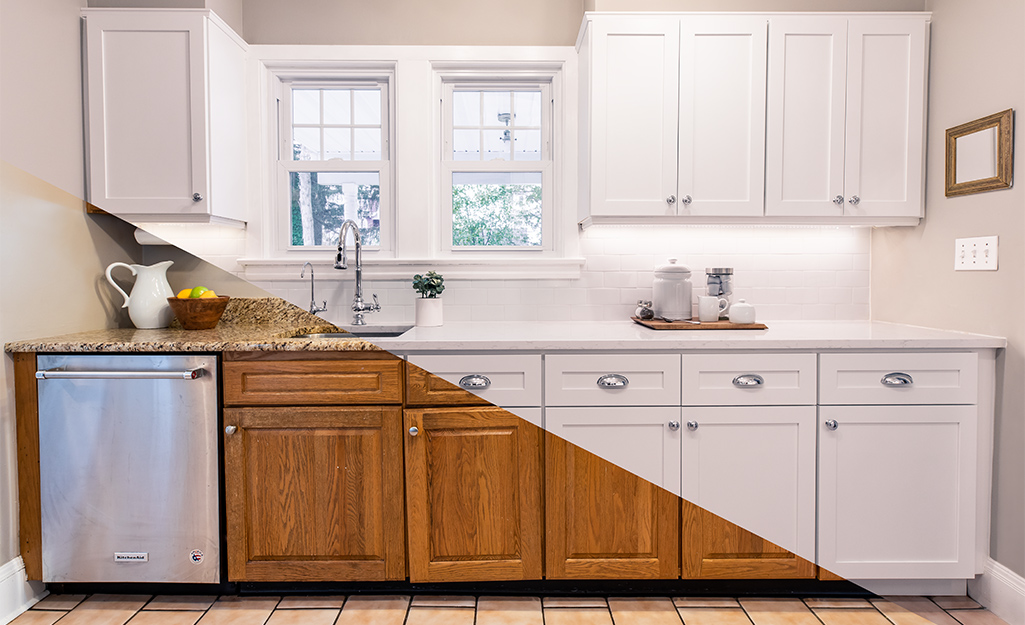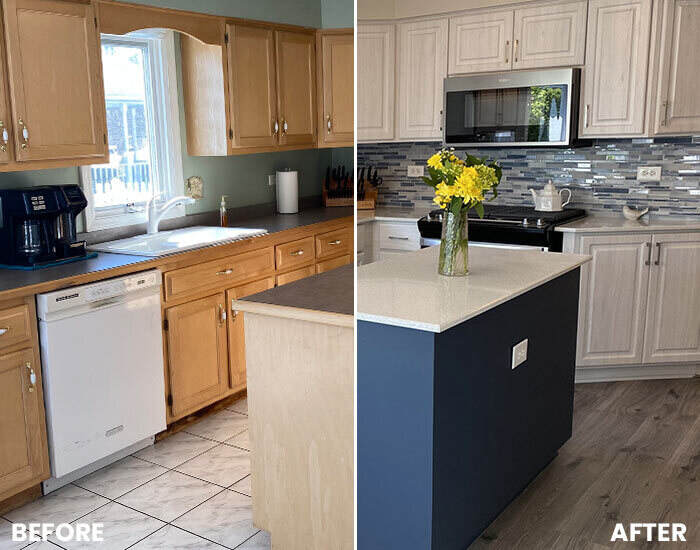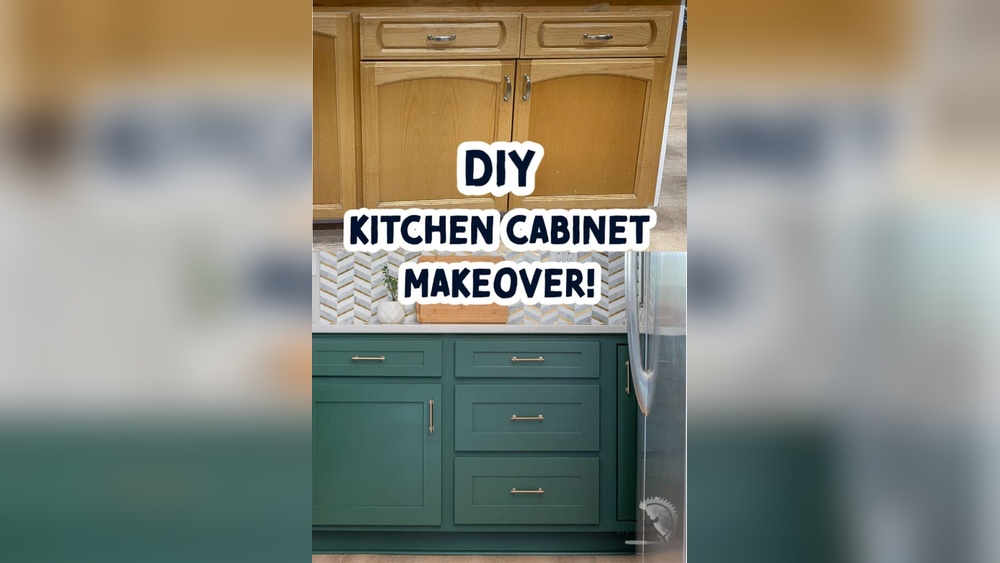Are your kitchen cabinets looking worn out or outdated, but you’re not ready for a full remodel? You’re in luck—refacing your kitchen cabinets can give your space a fresh, stylish new look without the hassle and high cost of replacing everything.
Imagine transforming your kitchen in just a few days, saving thousands of dollars, and avoiding major construction mess. In this guide, you’ll discover easy, practical steps to reface your cabinets yourself, whether you want to update the doors, add new veneers, or swap hardware.
Ready to breathe new life into your kitchen and impress everyone who walks in? Keep reading, because we’ll walk you through everything you need to know to get started today.

Benefits Of Refacing Cabinets
Solid cabinet structure allows refacing without replacing the whole unit. It keeps the frame intact, saving time and effort. This method works well if the cabinets are sturdy and undamaged.
A cost-effective update means spending less than a full remodel. Refacing uses new doors and veneers over existing boxes. It freshens the kitchen look without high expenses.
Quick renovation suits busy homeowners. Most projects finish in a few days, avoiding long kitchen downtime. This speed makes it easier to plan around daily routines.
Modern look without layout change keeps your kitchen’s current design. You get a fresh style but keep the same floor plan. No need to move plumbing or electrical work.
Limitations Of Refacing
Refacing kitchen cabinets works best if the cabinet boxes are in good shape. Damaged boxes need repair or replacement first. Refacing cannot fix broken or weak cabinet structures.
Changing the kitchen layout is not possible with refacing. You cannot move cabinets or change their size. This limits your design options.
For high-end renovations, refacing may not meet your expectations. It cannot provide the same luxury look as new custom cabinets.
If your budget allows a full remodel, replacing cabinets is usually better. It offers more flexibility and can improve kitchen function and style.
Materials And Quality
The cabinet box material plays a big role in the refacing process. Common materials include plywood, particleboard, and medium-density fiberboard (MDF). Plywood is the most durable and holds screws well. Particleboard is cheaper but less strong and can swell if wet. MDF is smooth and good for painting but not very water-resistant.
Durability considerations matter a lot. Solid and undamaged cabinet boxes can last many years after refacing. Damaged or weak boxes might need repair or full replacement. Check for water damage, cracks, or warping before starting.
For matching new surfaces, choose materials and finishes that fit your kitchen’s style. Veneers, laminates, or wood veneers can cover cabinet boxes well. Ensure colors and textures blend smoothly with existing parts. This makes the kitchen look fresh and uniform.
Tools And Supplies Needed
Basic tools include a screwdriver, hammer, and measuring tape. A power drill helps speed up the work. Sandpaper smooths surfaces before applying new finishes. A utility knife cuts materials precisely.
Refacing materials are cabinet doors, veneer sheets, and edge banding. Choose materials that match your kitchen style. Wood glue and nails secure new parts firmly. Paint or stain can refresh old surfaces.
Safety equipment is important to protect yourself. Wear safety glasses to shield your eyes. Use gloves to avoid splinters and cuts. A mask prevents breathing dust during sanding or cutting.
Preparation Steps
Start by removing cabinet doors and hardware carefully. Use a screwdriver to take off all handles, hinges, and doors. Keep all screws and parts in a safe place.
Next, clean and repair surfaces. Wipe down all cabinet frames with a damp cloth to remove dust and grease. Check for any scratches or dents. Fill small holes with wood filler and sand smooth once dry.
Finally, measure accurately. Measure the height, width, and depth of each cabinet door and drawer front. Write down every measurement clearly. Accurate measurements help in ordering the right size refacing materials.
Applying Veneer And New Doors
Start by cleaning the cabinet surfaces to ensure good glue hold. Use a contact cement to attach the veneer panels smoothly. Press firmly and wipe away any air bubbles for a neat finish.
Measure the cabinet openings carefully before installing new doors. Align the hinges and screw them securely to avoid sagging. Check door gaps and adjust hinges as needed for even spacing.
Trim any extra veneer or laminate at the edges using a sharp utility knife. Smooth the edges with fine sandpaper to prevent peeling. Apply edge banding tape or molding strips to finish the edges cleanly and protect them from moisture.
Adding Details And Trim
Toe kicks installation enhances the cabinet base, hiding gaps and protecting walls. Measure the space under cabinets carefully. Cut toe kicks from plywood or MDF to fit perfectly. Attach them using nails or adhesive for a clean look.
Shoe moulding application finishes the bottom edge of your cabinets. It covers any gaps between the floor and toe kicks. Choose moulding that matches your cabinet style. Nail it carefully along the base for a smooth, polished appearance.
Hardware replacement refreshes cabinet doors and drawers instantly. Select new knobs or handles that fit pre-drilled holes or fill old ones with wood filler. Install hardware evenly for a neat, balanced look. This small step can change the entire kitchen feel.
Cost And Time Estimates
Material costs for refacing kitchen cabinets usually range from $100 to $600 per cabinet. Costs depend on the type of veneer, laminate, or wood used. High-end materials like real wood or custom finishes cost more.
Labor time varies by project size and skill level. A professional may take 2 to 5 days for an average kitchen. DIY projects can take longer, sometimes over a week.
| Budget-Friendly Tips | Description |
|---|---|
| Use laminate sheets | Less costly than real wood but looks good |
| Do some work yourself | Save on labor by prepping or painting |
| Buy materials in bulk | Discounts reduce overall material costs |
| Keep existing cabinet boxes | Refacing saves money by reusing cabinet frames |
Maintaining Refaced Cabinets
Cleaning refaced cabinets regularly helps keep them looking new. Use a soft cloth with mild soap and water. Avoid harsh chemicals or abrasive pads that can damage the surface. Wipe spills immediately to prevent stains. Dry the cabinets after cleaning to avoid moisture damage.
Minor scratches or chips can happen from daily use. Handle cabinets gently to reduce wear and tear. Use felt pads under items that touch cabinet surfaces. Avoid slamming doors or drawers to prevent damage.
Check cabinets often for any signs of damage. Small repairs, like filling chips or tightening hinges, can extend their life. Replace doors or panels only if they are badly damaged or warped. Timely maintenance keeps your refaced cabinets looking fresh and working well for years.

:max_bytes(150000):strip_icc()/cabinet-refacing-demystified-1822044-v3-e2dabd6aceb543fca7fd1302e9aecf3b.png)
Frequently Asked Questions
Is It Worth It To Reface Kitchen Cabinets?
Refacing kitchen cabinets is worth it if your cabinet boxes are solid and you want a fresh look affordably and quickly. Avoid refacing if cabinets are damaged or you need a layout change. It saves money and time compared to full replacement while updating your kitchen’s appearance.
What Is The Best Material For Refacing Cabinets?
The best material for refacing cabinets is thermofoil due to its durability and smooth finish. Wood veneer also offers a natural, high-quality look. Both materials provide cost-effective, stylish upgrades while protecting cabinet surfaces. Choose based on your budget and desired aesthetic.
Can I Just Paint Over My Kitchen Cabinets Without Sanding?
You can paint kitchen cabinets without sanding only if the surface is clean and glossy paint is used. Sanding improves paint adhesion and durability. Skipping sanding may cause peeling or uneven finish. For best results, lightly sand to ensure lasting, smooth coverage.
How Expensive Is It To Reface Kitchen Cabinets?
Refacing kitchen cabinets typically costs between $1,500 and $9,000. Prices depend on cabinet size, materials, and labor. This option is more affordable than full replacement and refreshes your kitchen’s look quickly.
Conclusion
Refacing kitchen cabinets can refresh your kitchen affordably and quickly. It works best when cabinet frames stay strong and sound. You replace doors and surfaces for a new look. This method saves time and money compared to full replacements. Simple steps can give your kitchen a fresh feel.
Take care to measure and prepare carefully. With patience, you can improve your kitchen’s style easily. A well-done refacing job adds value and charm. Small changes can make a big difference in your space.

Yes, working as , Food Blogger and Product Reviewer for last 6 years. Here you will get amazing deals for Smart kitchen products. I am your best source for the latest update in cooking trends. I provide insightful articles, reviews, and analysis on cutting-edge kitchen gadget. My mission is to empower readers with the knowledge they need to stay ahead in a rapidly evolving coking world. Join me as we explore the future of food technology and how it shapes our lives today and tomorrow.





